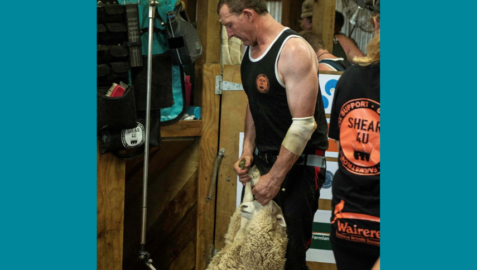Playing The Long Game
Maungatapere kiwifruit grower Mike Crum has spent a lifetime in the industry. Here’s what he’s learnt about navigating its ups and downs. Tell us …
Healthy Thinking helps you better manage the day-to-day ups and downs of farming.
Staying in the right headspace means you make good decisions, maintain positive relationships and cope well when the weather or global market throws you a curve ball.
Learning to cope when you’ve had a knock-back builds resilience. It’s a skill that anyone can learn and improve.
Resilient farmers draw on a network of people for help and advice. They also think in healthy ways, creatively solve problems and challenge their own view.
Firstly, identify the thought creating the unhealthy emotion. Then ask, Is the thought true? Is it worth it? Does it help me achieve my goal? If any of your answers are "No", then that thought is creating an unhealthy emotion and you need to change the thought.
When we are fired up it can sometimes be hard to know what we are really thinking. One way to work out your thoughts behind strong emotions is to slow things down. Writing down your thoughts or talking them through with a friend can help with this.
Have a positive saying and repeat it to yourself when under pressure. Examples could be “crisis equals opportunity” or, “it’s not what happens to me but my attitude to it that counts”. This helps you create a healthy response to difficult situations.
It’s a set of tools to change unhealthy emotions, attitudes and behaviours. It was developed by the Institute of Healthy Thinking. It’s based on science and philosophy.
The key idea is that you can work out whether emotions that you’re having in any situation are healthy or not. The tools of Healthy Thinking are based on the understanding that a trigger plus a thought create an emotion that leads to an action and a consequence.
By isolating the thought in response to a trigger we can apply a three question test to see if the emotion is an healthy one or not. We are then in a position to decide whether we need to change the thought to change the emotion. Or, keep the thought and take action to address the situation or trigger.
Healthy Thinking teaches you to ask three key questions when you’ve isolated a negative thought.
We need to know when an emotion is working like an alarm and telling us of a real threat. For example, our emotional response to a fire is telling us of a threat that we either need to ‘fight or flee’ from.
Often our emotions are responding to false alarms. We can use Healthy Thinking to break this pattern by working out whether the emotion is alerting us to a real threat, or just responding to a false alarm.

Maungatapere kiwifruit grower Mike Crum has spent a lifetime in the industry. Here’s what he’s learnt about navigating its ups and downs. Tell us …

A podcast series focusing on rural women’s mental health hits the air in September. Farmstrong spoke to one of the hosts Emily Walker. Whereabouts are …

Dan Billing and his mates recently completed a marathon shearing event in support of rural communities doing it tough. He talked to Farmstrong about the …